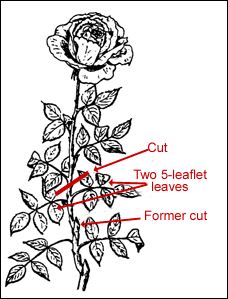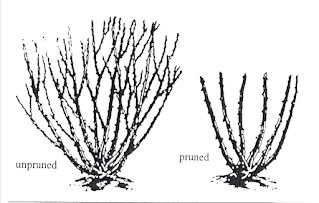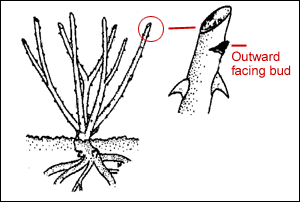Pruning our roses stimulates new growth and allows for more flowers to bloom throughout the season. Properly pruned roses make for a healthier plant with stronger canes while allowing for better air circulation. Roses produce flowers on new growth making annual pruning an essential part of basic rose care.
WHEN
In our climate, early-mid spring is the best time to prune roses once there is no threat of a hard frost and the weather is conducive for the plants to start growing. Many rose growers suggest waiting until the forsythias start to bloom as a general guideline that it’s time to start pruning. However, diseased/dead wood should be removed immediately at any time along with deadheading spent blooms (to encourage new blooms). Even if your roses have started to bud out, you’re still ok to prune.
 HOW
HOW
Grab a great pair of leather gloves to protect your hands, and a clean, disinfected pair of sharp bypass pruning shears (and be sure to disinfect pruners in between plants to prevent spreading disease). The best method for deadheading spent blooms throughout the summer is to cut the stem back to an outward facing bud at a 45-degree angle or about a ½” above a set of 5 leaves (not the set of 3 leaves as this will result in a weak stem). Continue as often as needed to keep your roses blooming all season long but stop September 1 to allow the plant to begin hardening off for winter.

Again, starting with your leather gloves and disinfected bypass pruning shears, make your cuts at a 45-degree angle about ¼” above outward facing buds. This cut should slant away from the bud. Remove about one-half to two-thirds of the plant’s height leaving the canes about 18-30” tall. Your rose bush should have 4-7 canes that are the width of your finger/thumb and all pointed out and away from the crown for air circulation. Remove canes that are pencil width or smaller and/or dead (cut them off at the base or the point of discoloration). Here's to a great growing season for beautiful, healthy, blooming roses! 

